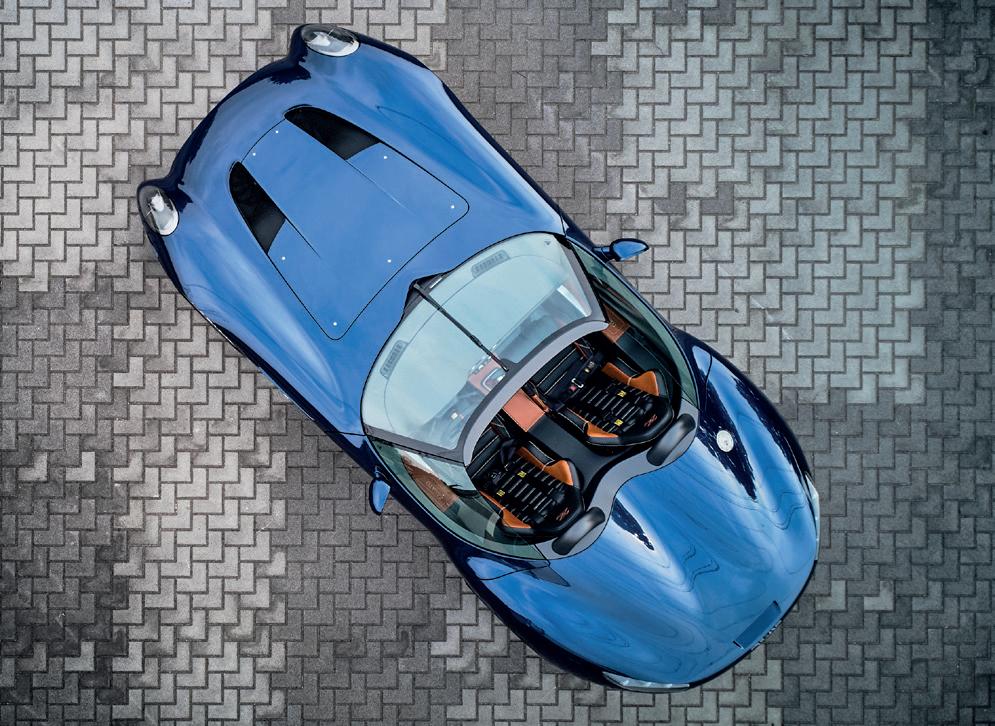
6 minute read
Meeting the man behind the monster
THERE’S NOTHING QUITE LIKE a Zagato car. Close your eyes, and you may recognise engine-sound timbres from what lies beneath –but the surface impact will make you think, even if you don’t always fall in love. There’s no mistaking a Zagato.
The roofless version of the gullwing coupé first revealed in 2015, the Zagato Mostro Barchetta by Maserati is one of only five built; it debuted at Villa d’Este in 2022. Even without those gullwing doors, there’s no doubting the impact of the design from Zagato’s Norihiko Harada. While influenced by the Maserati 450S Costin-Zagato that was dubbed ‘The Monster’ by Stirling Moss, it still looks like something beamed in from another universe.
Zagato’s uniqueness is what attracted Norihiko to the firm in the first place. “Beauty and technology interact directly and spontaneously,” he says. “Zagato designs are always very sporty, and they have their own identity – evergreen and pure.”
His first exposure to the brand’s work came at an early age. “I was 12, an elementary-school student; I saw an ad for the Alitalia airline in one of my father’s magazines,” he explains. “An Alfa Romeo Junior Z was parked under the wing of a Douglas DC-8. I fell in love with the car right away –the Plexiglas-covered headlights on the sleek nose seemed so impressive, with such a mean and proud look.”
Norihiko has been with Zagato since the mid-1990s. He defines the brand’s style as representing the spirit of the automobile itself, pushing the car forwards: “Zagato’s style is the best way to understand how beauty has been created between designers and engineers throughout history,
From Opposite
This roofless Zagato Mostro Barchetta was based on the 2015 gullwing coupé, and is one of only five built. The attention to detail is superb.
particularly between the 1920s-60s.”
Underneath his Mostro design lies the lightweight chassis of a Gillet Vertigo .5. Gillet has been around since the early 1990s, building a lightweight chassis from carbonfibre and Formula 1-inspired honeycomb materials. While early Vertigos had a Ford Sierra Cosworth engine, for much of its life it used the Alfa Busso V6, and it competed in the Belgian and FIA GT Championships. In 2008, motive power switched to the Ferrari F136 unit, as used in crossplanecrankshaft form by Maserati, and also as featured in the Mostro.
Zagato says the 4.2-litre V8 puts out 420bhp, which is marshalled by a manual-sequential six-speed ’box. The car features double-wishbone suspension with pushrod-actuated springs and dampers, while AP Racing calipers do all the stopping. There’s no electronic traction control, and the car weighs a mere 1200kg.


Norihiko is very pleased with how the Barchetta has turned out, and highlights the continuity between the door’s panel and glass in particular. “It continues with no surface break or bend,” he says. “I was able to realise this because the side glass is fixed and doesn’t drop into the door – it helps to keep the styling essentially pure.”
This purity extends to Norihiko’s design approach, which was only loosely inspired by the 450S and other ’50s racing cars: “If people appreciate the pureness and simplicity of line, it’s because I didn’t look at too many things to get inspiration.”
Instead, he draws his design influence from elsewhere. “I have always loved aircraft and ships – any kind of invention built to move fast,” he explains. “I love to see or stay close to flowing rivers.”
That organic influence is reflected in the way he approaches a fresh design. “I start by sketching, ballpoint pen on paper,” he says. “Once I find some nice feeling, with a spontaneous mess of lines, I try to fit to the package or technical restrictions. Then I start to ‘cook’ them using Alias computer software – we don’t normally make a physical model.”
Such fluidity in the design process is a reason to be positive about the incoming rush of EV powertrains, according to Norihiko. “I’m positive to any kind of opportunity that can give us wider space to explore our creative spirit, as well as evolve the automobile between new technology and design creativity,” he says. Just like every Zagato should.
Is Bertone coming back?
The famous coachbuilding name is now in the control of two brothers with a long automotive-industry history
IS THE GREAT BERTONE NAME set to make a comeback? That’s the intention of its owners, brothers Mauro and Jean-Franck Ricci.
Bertone’s history dates back to 1912, but as with most coachbuilders its fortunes began to fade during the 1970s and ’80s, and it went out of business in 2014. The name was then acquired by an architect, who continued as Bertone Design.
In 2016 Bertone Design was bought by automotive consultancy group AKKA Technologies, which was part-owned by the Ricci brothers. AKKA was subsequently sold in 2021 to the Adecco Group, based in Zurich, in a deal thought to be worth €2 billion. The Bertone brand, meanwhile, was sold on to Mauro and Jean-Franck Ricci.
The brothers’ first move as Bertone has been to release images of their planned new limited-edition hypercar, the GB110 (below), of which just 33 examples will be built. The design of the GB110, named for last year’s 110th anniversary of Bertone, is said to have been influenced by the coachbuilder’s BAT cars, Stratos Zero and Marzal.
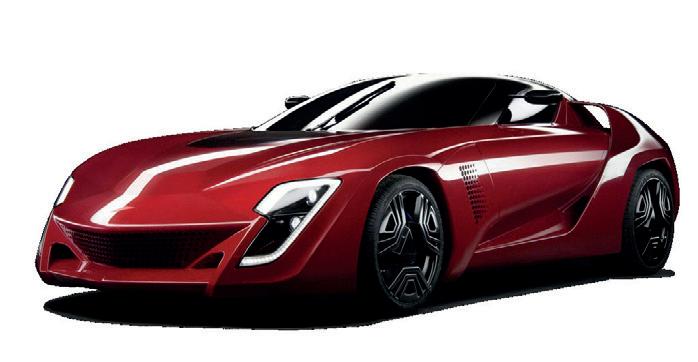
At the heart of the GB110 is an internal-combustion engine that is capable of using fuel converted from plastic waste. It’s said to be “the first in a series of limited-edition vehicles” from the revived company. More details at www.bertone.it.
1920 A Period Of Growth
Giovanni Bertone began expanding his workshop to become a coachbuilder. His first assignment was a torpedo body
1912 From Carradore To Carrozzeria
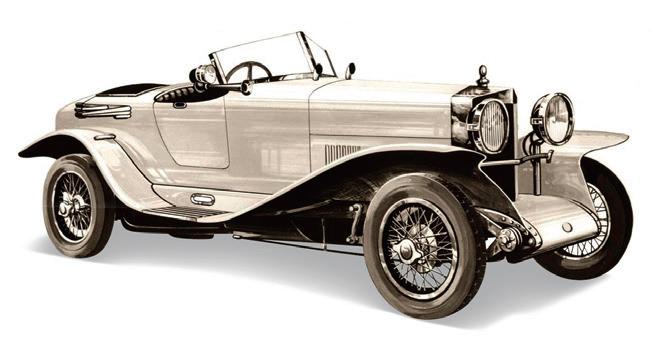
The Carrozzeria Bertone story began with Giovanni Bertone in 1912 in Turin. He specialised in the construction of horsedrawn carriages, and quickly gained attention for his quality and artisanal craftsmanship.
1930 INTERNATIONAL SUCCESS
The SPA led to international success, with the design of the Lancia Artena in 1932. Giovanni Bertone’s son ‘Nuccio’ joined in 1933, bringing a new level of design innovation.
1940 Rebuilding The Future
Having pivoted in wartime to military vehicles, Bertone started its reconstruction shortly after World War Two.
1960 Making History
The ’60s saw Bertone complete a move to a new plant at Grugliasco. Also, the company launched the Fiat 850 Spider, and started its partnership with Lamborghini.
1980
Collaborations
Bertone was now responsible for the production, sales network and aftersales assistance for the Fiat X1/9. This was followed in 1986 with the signing of a new agreement with General Motors Europe.
2000 Full Service
When Lilli Bertone took over the management of the brand in 1997, Bertone became a fully integrated service company in the automotive, transportation and industrial design sectors.
2020–23 AN ICON REBORN
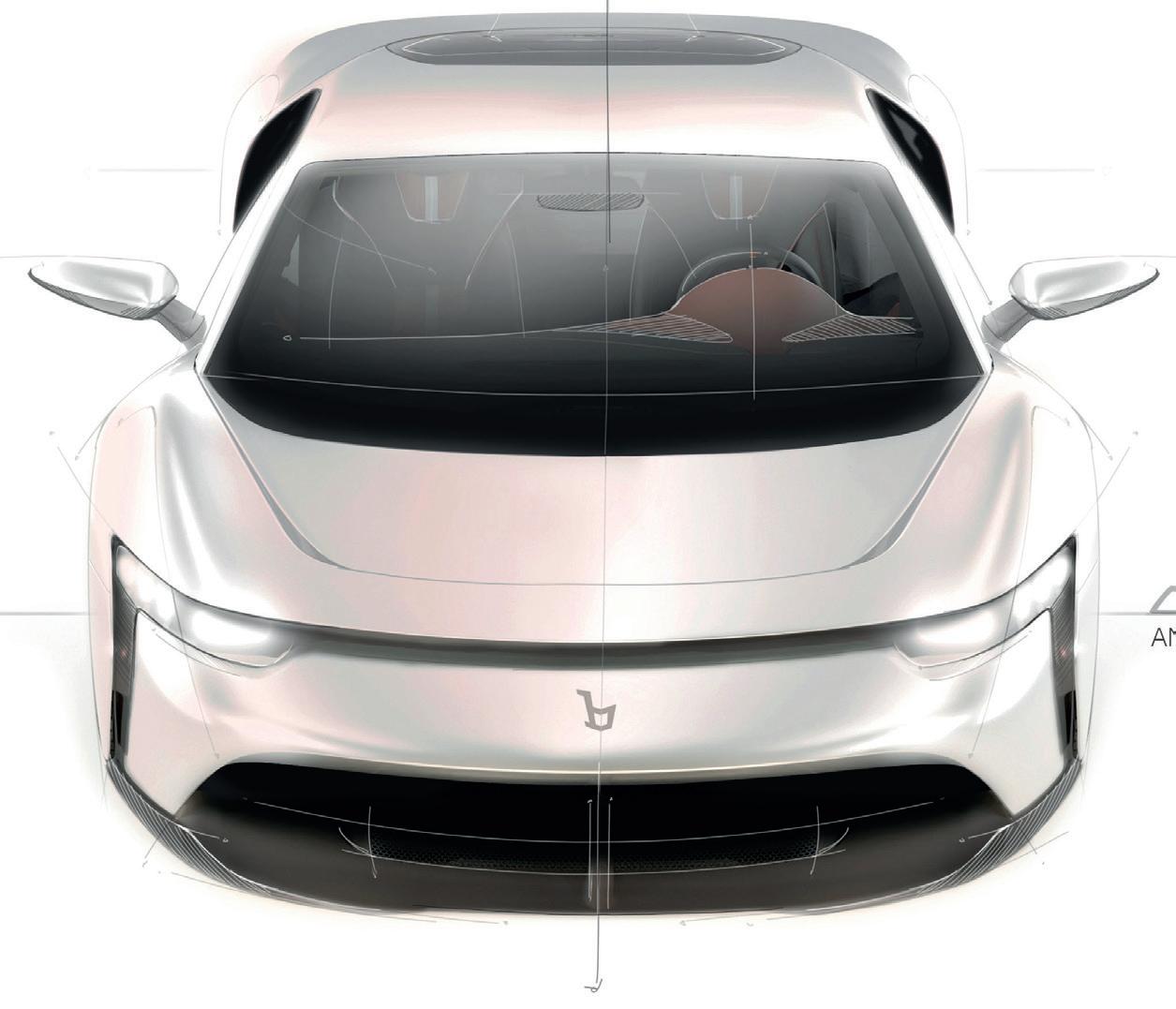
Bertone’s new owners are car enthusiasts Mauro and Jean-Franck Ricci, who are relaunching Bertone with a new vision for the future.
1950 CONTINUED EXPANSION
In the 1950s came the first orders from countries other than Italy. This was made possible through collaborations with the likes of Alfa Romeo.
1970 New Partnerships
Bertone also began working for Volvo, and created the Lancia Stratos Zero, too (below).

1990 Innovation
Bertone entered the 1990s with a focus on technological innovations including the Blitz Barchetta, a show car that featured an electric engine and avant-garde construction.
2010 New Ownership
After unveiling the Bertone Mantide (below), the company went on to pioneer the birdof-prey-inspired Alfa Romeo Pandion at the 2010 Geneva
The Last Of Its Breed
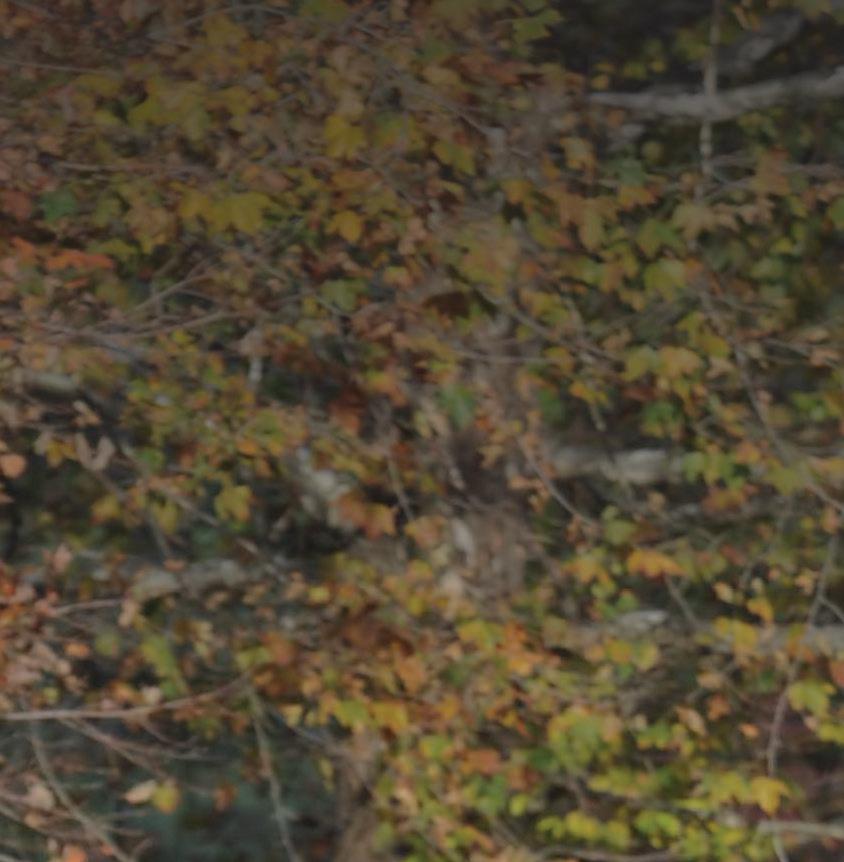

This 1965 Shelby 289 Cobra, CSX 2588 is the second to last Shelby 289 Cobra built. As part of the Shelby family collection that once housed the Shelby Cobra prototype CSX 2000, CSX 2589 was personally constructed for Carroll Shelby himself. Naturally, with no immediate plans to sell such a personal vehicle, this 289 Cobra, the penultimate small-block produced, and the last to be sold to the public when new, is an intriguing 'bookend' example of one of the standout icons – automotive or otherwise - of the 20th century. This example represents the last of the breed. With regular servicing, a known list of previous owners, and listed within SAAC World Registry of Cobras & GT40s, Collectors Garage is proud to o er a significant matching numbers example of Carroll Shelby's finest creation.
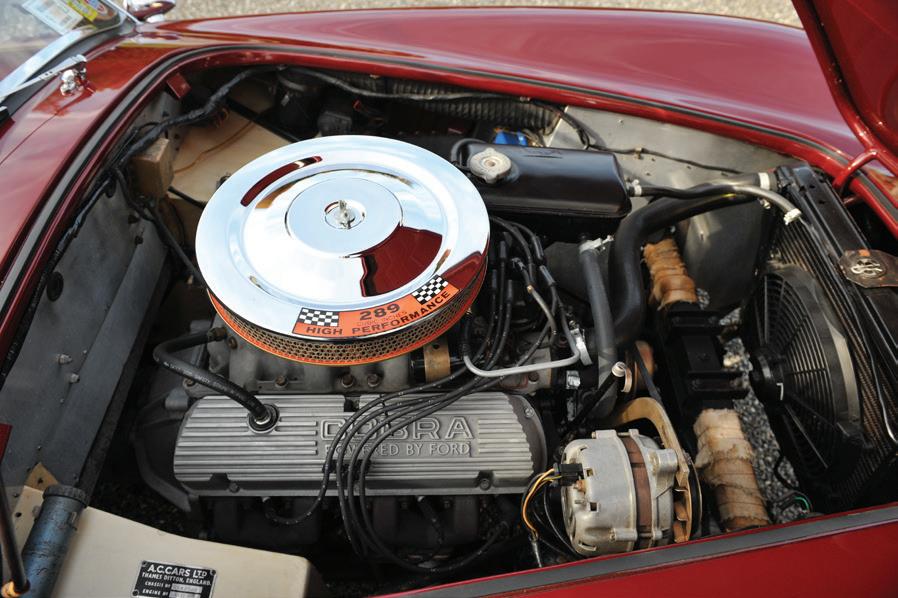

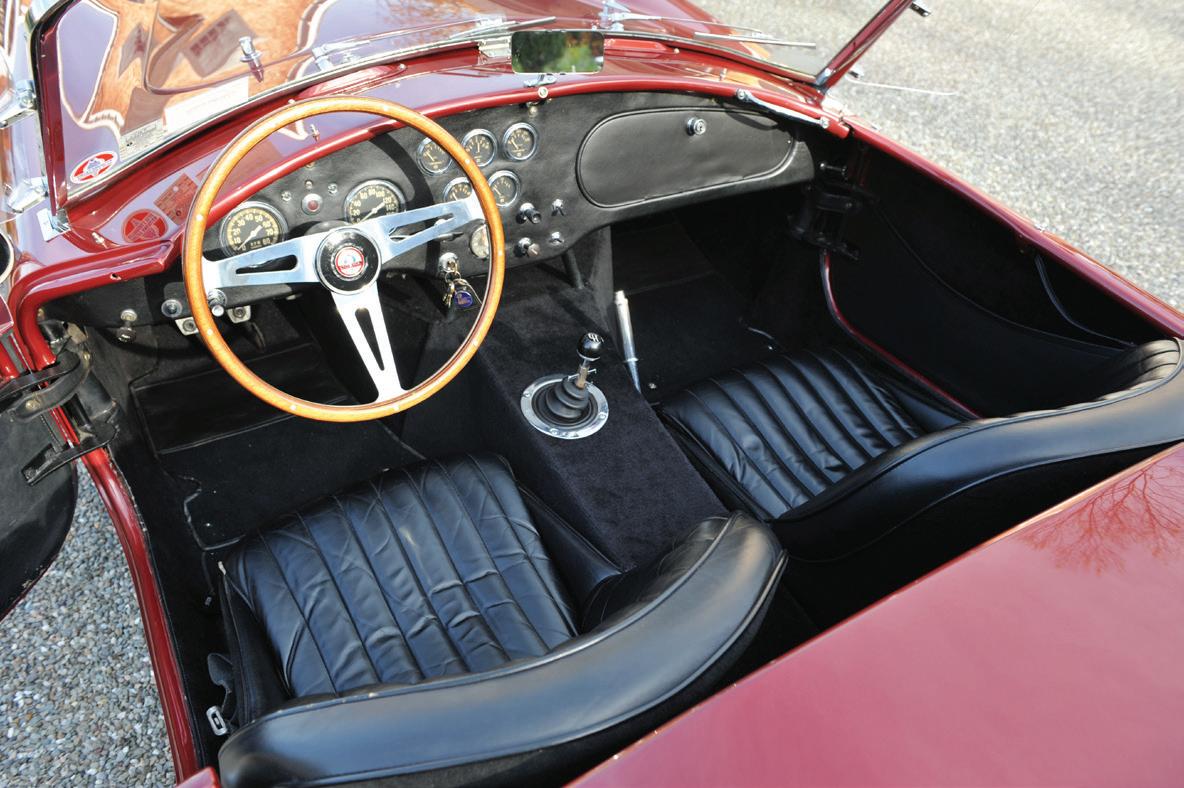
LAST JUNE, DR FRED SIMEONE, founder of the Philadelphia museum that bears his name, passed away. As with any such great institution with valuable historic collections, concerns have been expressed about its future. Did Dr Simeone provide for the continuation of its mission? Will his legacy be preserved?
Harry Hurst, Simeone director of programs, sat down with executive director Kevin Kelly to discuss the future of this important museum.
First, tell us what has happened since Dr Simeone passed away. Well, it’s been a very hectic time. You can’t completely prepare for such a transition, but Fred did his best to put everything in order. Over the years he’d made his wishes clear on how he wanted the museum to carry on.
He knew he wasn’t going to live forever – and he knew he wasn’t taking the collection with him. He thought it should be in a trust. He was acutely aware of what had happened to Reno’s Harrah Collection after Bill Harrah didn’t address it in his will – much of it was sold. All of the assets of the Simeone, the cars and the library, have been transferred to the Foundation over the years.
The Foundation now runs the museum via a small board, many of whose members have been on it for decades. Fred’s daughter Christina is one. She has extensive non-profit experience and understands Fred’s desire to keep the museum going.
And the day-to-day operation?
I’m executive director, and Amanda Jimenez – who was with Fred before the museum, as his medical practice’s office manager – is administrative director. We also have Chris Webb handling operations and William Murphy doing our communications including digital. Ryan Bollinger runs










